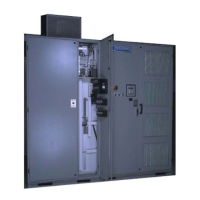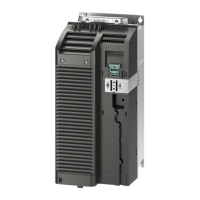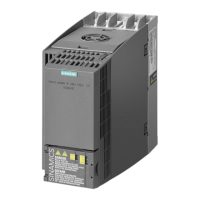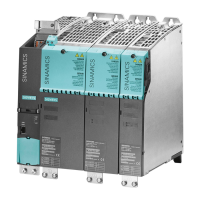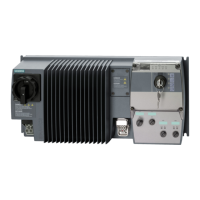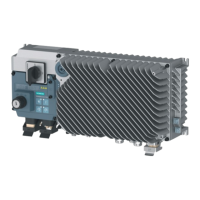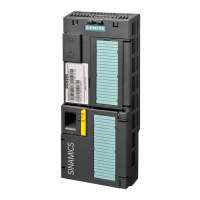[FAULT]
The [FAULT] indicator is illuminated solidly when one or more system errors have occurred, e.g.
boot-up test failure or over voltage fault.
The [FAULT] indicator blinks when one or more alarms are active or unacknowledged.
• Press the [FAULT RESET] key to clear any existing fault conditions and restore the system to
normal operation.
9.1.3 Fault Reset Key and Fault LED Indicator
[FAULT RESET] Key
The [FAULT RESET] key is located in the bottom left corner of the keypad and has a dual purpose:
• If a drive fault is present the reset will attempt to clear the fault.
• If there is no drive fault but an indication alarm is present then the fault reset acknowledges
the alarm.
The [FAULT RESET] key is a programmable key that works in conjunction with the drive SOP. In
its basic function the [FAULT RESET] key is used as a generic fault reset but it can be changed to
incorporate system logic specic to an application.
Fault LED Conditions
The fault LED can be ashing, on continuously, or o.
• A ashing fault LED means that an alarm is either active or unacknowledged.
• A fault LED that is on continuously means that a fault condition exists.
LED conditions are detailed in the following table:
Table 9-1 Fault LED Status: Multi-language Keypad
Fault LED Condi‐
tion
1
Display Fault Condi‐
tion
Alarm
Condition
Alarm Acknowledged
(by means of Fault Re‐
set)
Flashing Status display will be reduced in height and
alarm name will be shown in yellow box at
bottom of display.
N/A Active (not ac‐
knowledged)
No
Flashing* Status display will be reduced in height and
alarm name will be shown in yellow box at
bottom of display.
N/A Cleared (not ac‐
knowledged)
No
Flashing none N/A Active (ac‐
knowledged)
Yes
Flashing
(see gure below)
Status display will be reduced in height and
alarm names will be shown in rotation in
yellow box at bottom of display.
N/A Multiple unac‐
knowledged
alarms
No
Software user interface
9.1 SIMATIC Keypad
NXGPro+ Control Manual
342 Operating Manual, A5E50491925A

